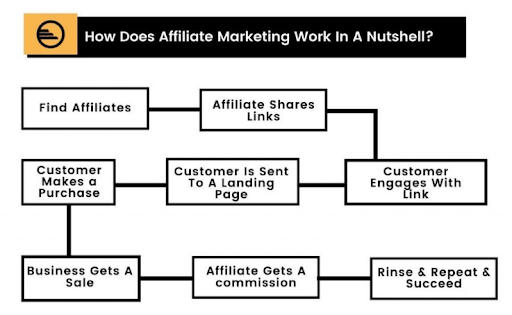Affiliate marketing is a cost-effective way for brands, both big and small, to promote their products and services. But what exactly is affiliate marketing? Affiliate marketing is a type of performance-based marketing where publishers earn a commission by promoting a product or service made by another retailer (or advertiser) using an affiliate link. The affiliate partner is rewarded a payout for providing a specific result to the retailer or advertiser — in most cases, that result is a sale. Because of this, affiliate marketing is considered one of the most cost-effective marketing channels, delivering a strong ROAS.
Let’s cover the basics of affiliate marketing and why your brand should consider leveraging this lucrative marketing strategy.
Benefits of affiliate marketing
- Low cost of start-up
- Low risk
- Targeted traffic
- Access to a large pool of websites/publishers to leverage for brand/product recognition
- One of the most cost-effective marketing channels with a strong ROAS
- Publisher partnerships can benefit from PR strategy
How do affiliates get paid?
Affiliates earn money for promoting an advertiser’s product or service. Below, we breakdown the common ways affiliates could be paid:
- Pay-per-sale – Affiliates earn a commission for each sale
- Pay-per-install – Affiliates earn commission per mobile app or software install
- Pay-per-lead – Affiliates earn a flat fee per lead generated to the advertiser
- Pay-per-click – Affiliates earn a payout on every click to an advertiser’s website

At the basic level, affiliate marketing consists of four stakeholders: the network, the publisher, the merchant (or the one who distributes the products and the services), and the customer. Because networks offer hundreds of thousands of publishers and affiliates your brand can leverage, it’s a great way to grow sales and brand awareness over time.
Now that we’ve covered the basics of affiliate marketing and why it makes sense to implement, here are some of the best practices for this channel.
Best practices
- Don’t offer the highest commission
- Connect with your network provider to get the industry average, and base your initial commission offerings on that data. You want to avoid starting at a high commission because that becomes your baseline, and it’s hard to scale it down.
- Another factor to consider is the seasonality of your category, as this will affect the commission depending on how competitive your category is.
- Ask your affiliates where to expect traffic to come from
- Publishers leveraging paid search should always ask what terms they will be running
- Be open to affiliate feedback
- Stay in constant contact with publishers
- Present publishers or potential affiliates with mission-critical information such as:
- Program average order value (AOV)
- New coupons and promotions
- Product spotlights including bestsellers, new products, and seasonal or holiday items
- Links to your newest or best-converting creative
- New banners and text links (your publishers don’t necessarily know that they’ve been uploaded)
- Most importantly, include linking code for the links you are offering. This makes it easy for publishers to implement your links, and has a huge impact on link activation.
Affiliate marketing delivers results when the partnership between the affiliate and advertiser is strong and constant.
The affiliate channel is not set-it-and-forget-it. An advertiser cannot sit back and wait for publishers to contact you and begin promoting your brand. Most established publishers do not have the resources to reach out to every new advertiser. It’s important to consistently make an effort to connect with publishers, so that you’ll always be ready for an opportunity to present your brand and promote it.
Just like it’s important to reach out to new publishers, it’s also important to maintain contact with ones already in your network. Keeping communication open and checking in to see how the program is doing will build good-will and strengthen the relationship. When both parties are happy, it’s a win-win all around.
Key tasks and how often to implement them to maintain and grow your program
Tasks for a successful program range from daily to quarterly. Each task completed is a building block for the next, and we invite you to learn what these tasks are with our outline below.
Daily:
- Check notifications
- Check transaction inquiries
- Check publisher applications
- Check on product catalog
- Review your dashboard to ensure transactions are processing as expected
Weekly:
- Email publishers to keep them in the loop of:
- Promotions
- Product launches
- Brand updates
- Identify new recruitment opportunities
- Monitor fraudulent activities
Monthly:
- Review and approve publisher payments
- Identify top increases and decreases in the program
Quarterly:
- Run an activation campaign
- Conduct a competitive analysis
- Perform site audits
- Create text links for key promotions
- This way, your text links are created early, and you can inform publishers well in advance.
Staying connected with your publishers is essential to running a winning affiliate marketing program. The most effective way to stay connected with your partners is to send out quality newsletters and offer information that is genuinely interesting or valuable to them.
For more information or help improving your affiliate strategy, contact us.